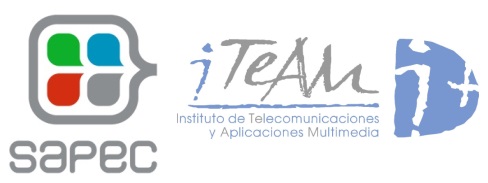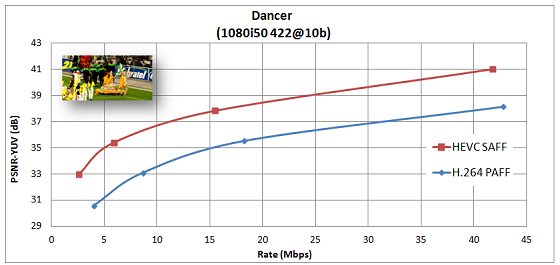One year
after the adoption of the new video encoding standard HEVC (H.265), it is still
awaking a lot of interest in audio-visual industry, as confirmed in the SMPTE
annual congress, which was celebrated from 21st to 24th
of October in Hollywood.
SMPTE 2014, organized
by the Society of Motion Picture and Television Engineers, is the most
important annual scientific event about image movement technology and
communication, production, operations and related sciences. This congress
gathers for three intense days the elite and world leaders in technology of
studios, transmission and distribution networks, community of production and
post-production, software companies, systems integrators, manufacturers and
other leaders of industry images (https://www.smpte.org/ATC).
Faced a large
group of experts, SAPEC and ITEAM have showed the benefits of HEVC in the encoding
of interlaced formats, especially for high definition format 1080i. Its
relevance is based on that nowadays, this interlaced format still has a very
strong implantation both in TV production area, where more than 80% of contents
are still produced in 1080i, and in the broadcast field, where it is the
clearly dominant format in all HD platforms, without forgetting the immense and
valuable HD contents file, where this format is preferred front of progressive
format (720p or 1080p).
Because of
the lack of specific tools for interlaced mode encoding that presents HEVC, there
is a confusion in industry related to HEVC capacity to encoding interlaced
contents. A sample of the benefits provided by HEVC in this field is that DVB
has recently approved a new version in its recommendation TR 101 154 with the
aim of providing support with HEVC standard to 1080i interlaced formats in its
different frame-rates.
SAPEC and
ITEAM have presented a novel architecture that facilitates the implementation
of the “Sequence-Adaptive Field-Frame’” or SAFF model, which allows the
efficient encoding of low delay interlaced formats.
With the aim
of proving the efficiency of the proposed model in a HEVC encoder, results are
shown on a wide number of sequences with different complexity by using the new
HEVC profile “Main 422 10b”. These results prove that HEVC can reduce the bandwidth
used at the present by H.264 in its profile “High 422” until more than 60% for
high complexity sequences, meanwhile for less demanding sequences as animation
contents, HEVC still offers an efficiency higher than 30% compared with H.264
for interlaced formats.
As a conclusion, SAPEC and ITEAM have remarked that the new Main 422 10bits HEVC profile for professional applications offers important bandwidth reductions that can be used by broadcasters and operators, as much for contribution and TV broadcast systems with current high definition interlaced format.


